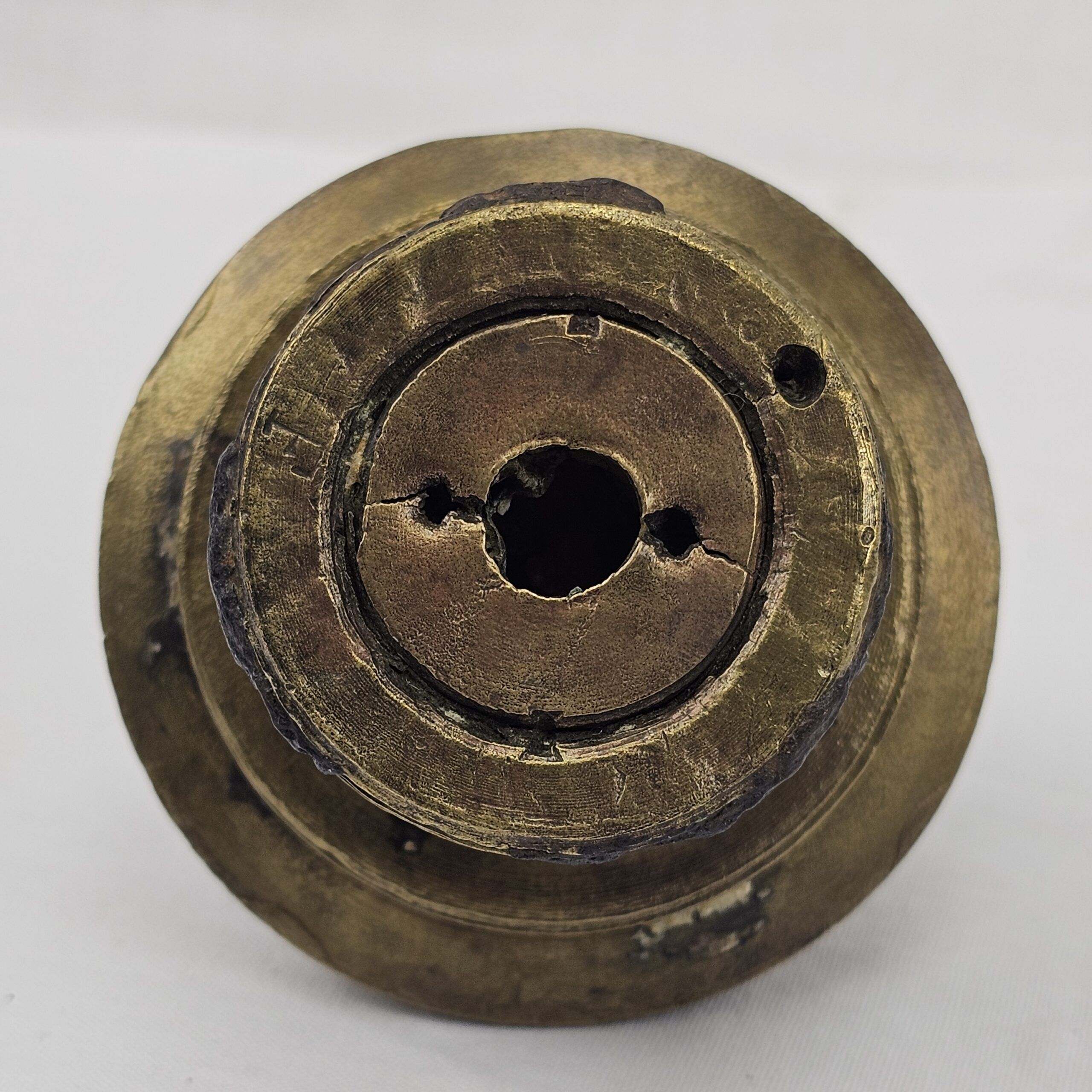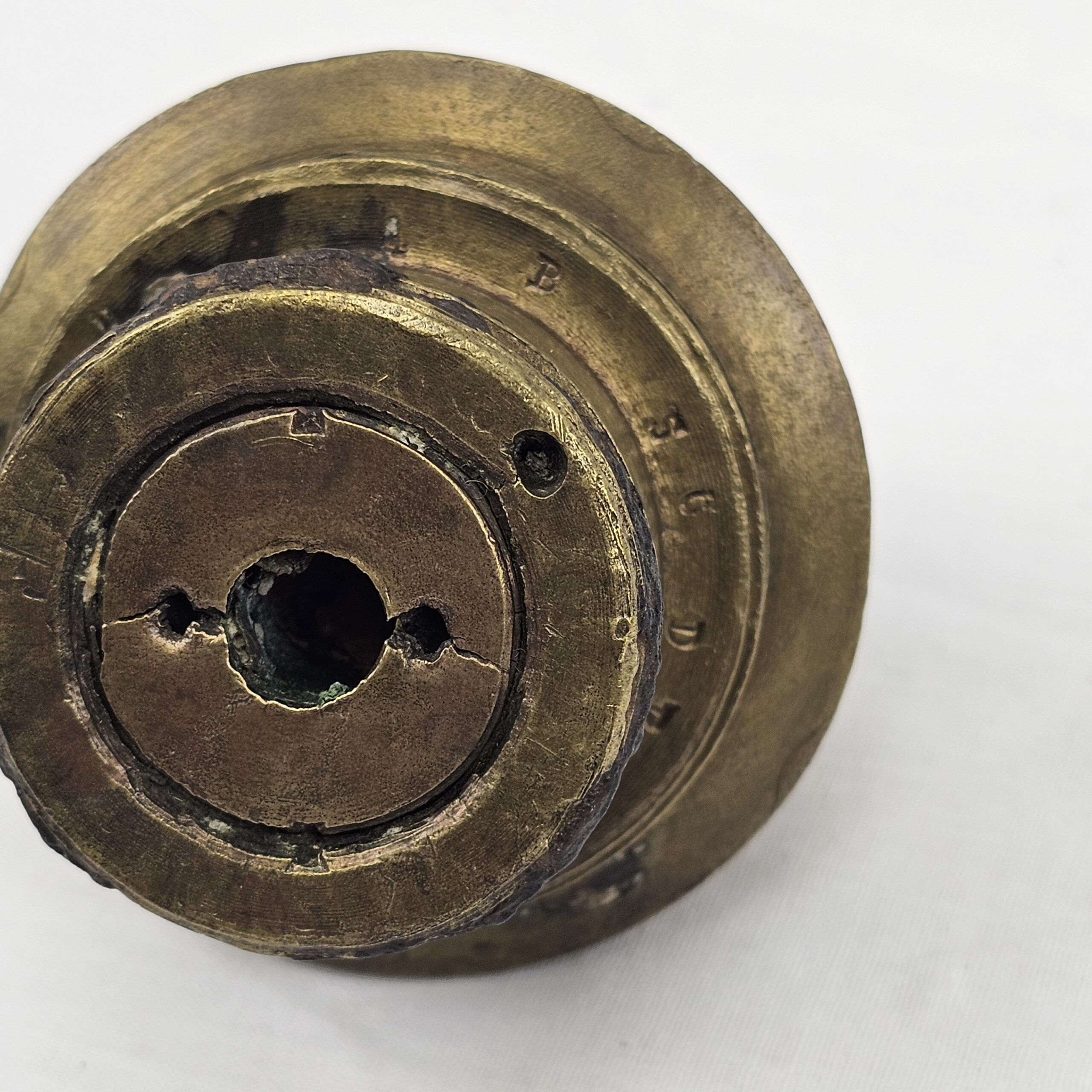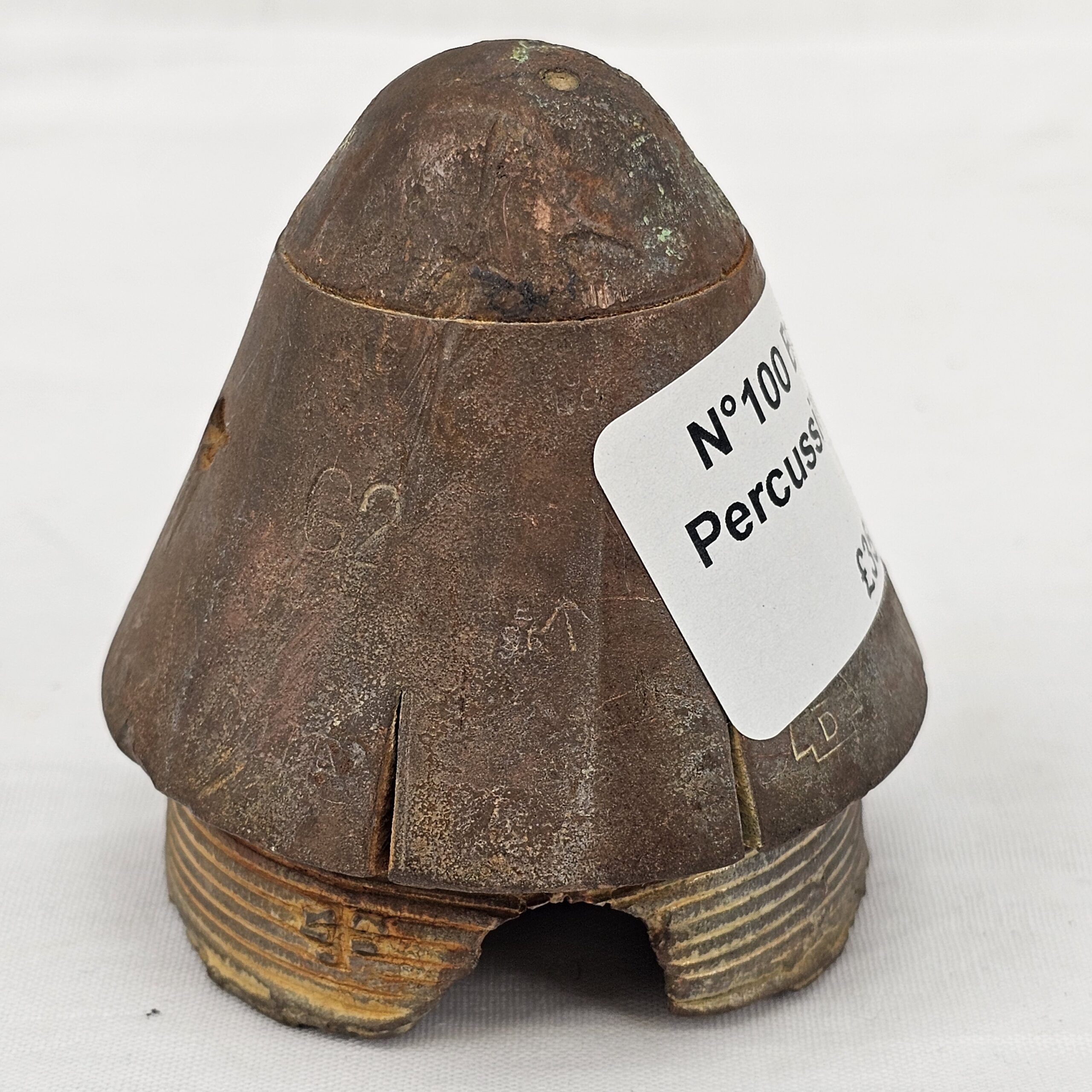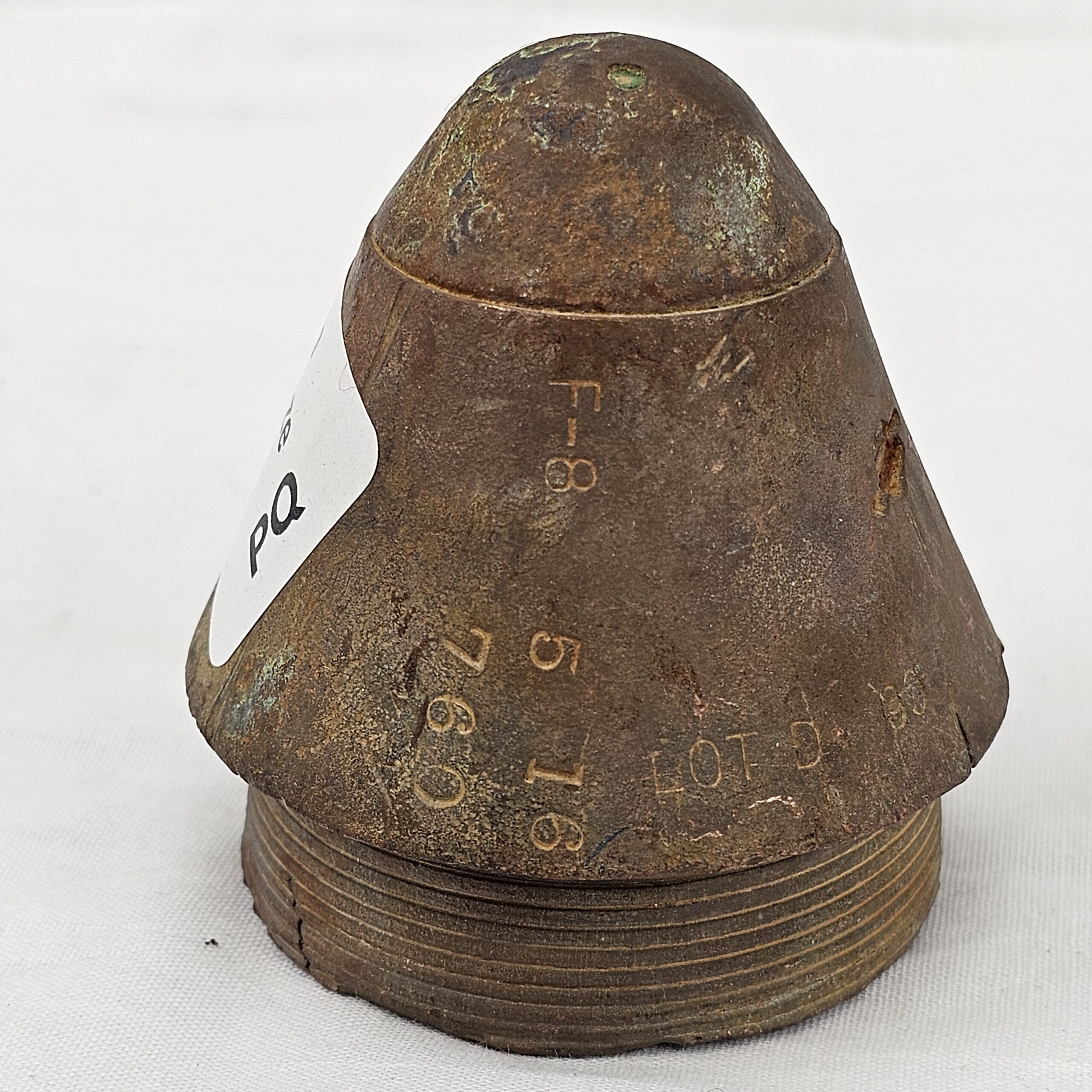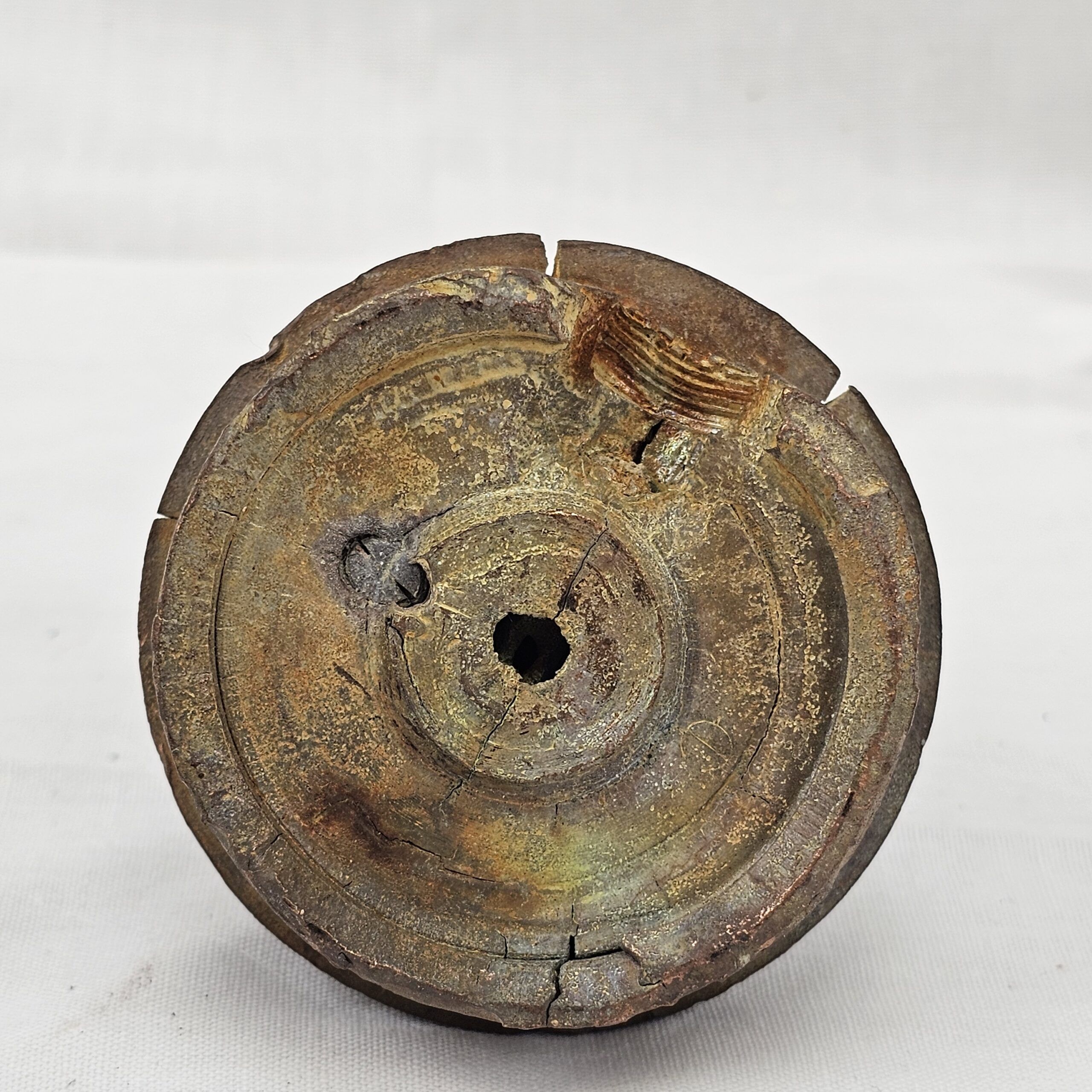~ No. 100 British Percussion Fuze ~
The No. 100 British Percussion Fuze was a significant piece of ordnance technology used by the British military, particularly during World War I. This type of fuze was designed for artillery shells and was a key component in the effectiveness of British artillery during the conflict. Here’s a look into its characteristics and role:
Development and Design
- Introduction: The No. 100 Fuze was developed to meet the needs of modern warfare, which demanded more reliable and effective artillery ammunition.
- Percussion Mechanism: As a percussion fuze, it was designed to detonate upon impact with a target. This mechanism ensured that the shell’s explosive payload would be delivered precisely at the point of contact, maximizing the damage to enemy fortifications, equipment, and personnel.
Features and Functionality
- Sensitivity Adjustment: One of the notable features of the No. 100 Fuze was the ability to adjust its sensitivity. This meant that artillery crews could modify how easily the fuze would detonate upon impact, allowing for greater versatility in different combat situations.
- Construction: The fuze was typically constructed from brass or another metal alloy, making it robust enough to withstand the forces of firing and impact before detonation.
Operational Use
- Effectiveness: The No. 100 Percussion Fuze proved to be highly effective in trench warfare conditions. It allowed for direct fire against enemy trenches and strongpoints, with the impact detonation ensuring that the explosive force was applied directly where needed.
- Versatility: Its use was not limited to a single type of artillery piece; the No. 100 Fuze could be fitted to a variety of shells, making it a versatile component of the British artillery arsenal.
Legacy and Impact
- Technological Advancement: The development and deployment of the No. 100 Fuze represented a significant technological advancement in artillery warfare. It demonstrated the increasing sophistication of munitions technology during World War I.
- Influence on Later Designs: The principles and operational successes of the No. 100 Fuze influenced later designs of percussion fuzes. Its impact can be seen in the continued evolution of artillery fuzes, which became even more reliable and effective in subsequent conflicts.
Challenges
- Technical Challenges: Despite its effectiveness, the No. 100 Fuze, like all munitions technology of the era, faced challenges related to reliability and manufacturing quality control. These were addressed through continuous improvement and stricter production standards.
The No. 100 British Percussion Fuze is a prime example of the technological innovations in ordnance that occurred during World War I, contributing significantly to the capabilities of artillery in the conflict and setting standards for future developments in munitions technology.



